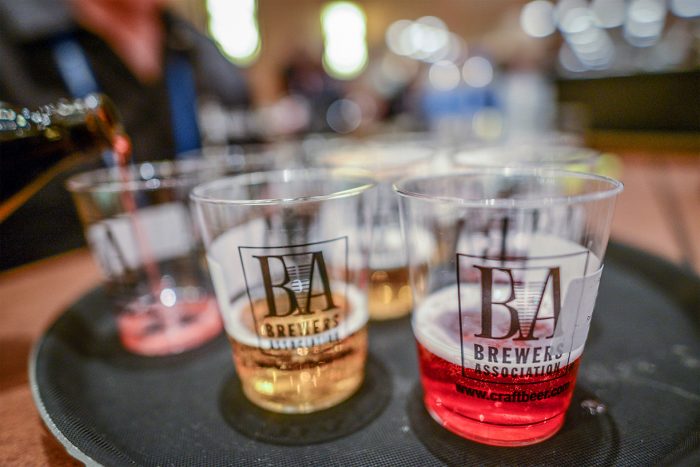
Judging Greatness: Inside The Great American Beer Festival
By Fal Allen
The 39th annual Great American Beer Festival (GABF) just wrapped up and I’ve been lucky enough to sit on the judging panel since 1992. Held in Denver each year, the GABF takes place over three weeks and features over 2,000 breweries and nearly 9,700 beers that are judged by a panel of over 125 brewing professionals. This year I tasted 80 to 100 beers in a 7-hour day, and in the end GABF awarded just under 300 medals to 260 different American brewers. Here’s how it went down.
Setting the Stage
This year, like last, the judging took place over three weeks in a well-spaced open warehouse with numerous safety protocols in place. If you’ve ever tasted at a brewery, and we’re guessing most you have, there’s that feeling around the sixth, seventh, or twelfth beer when things all start to blend together. Now multiply that by a dozen and palate fatigue becomes a real concern. But fear not, we’re all trained professionals; the judging is slow and the rounds are spaced out with breaks for lunch.
How Beers are Judged
Beers are judged in one of 98 style categories. Each beer is evaluated within the style on flavor and aroma but judges also consider color, clarity, foam quality, body, intensity, and balance. A set of three judges each individually take notes on a flight of ten to twelve beers, then each judge independently ranks the beers from best to worst. After all the beers are ranked the judges discuss the results and come to a conclusion on the top three beers in the panel. These top beers then move forward to the next round. Each category has multiple rounds which culminate in the medal round at which time the judges will also come to a consensus on the order of the top three beers – bronze, silver and then gold for the winner.
Trying Blind
During each round judges take a lot of notes and give feedback to the brewers but all the judging is double blind – there’s no nepotism or favoritism here. In a screened off area one person pours the beer into a numbered cup then removes the bottle or can. Another person then enters the room and picks up and delivers the beer without knowing what beer is in what numbered cup. Judges receive the beer with only a number and style designation. And, in order to minimize judge’s personal taste preferences or biases, beers are judged by a strict set of style guidelines that are updated annually.
Winning Tips? Pay Attention
Reading and understanding the guidelines is probably the most important thing a brewer can do before they enter their beer. For example, when a guideline specifies a bitterness for a specific style and a brewer’s beer exceeds those IBU limits, they’re not doing themselves or their brewery any favors. Judges pay attention to the style guidelines and vote accordingly. If you want to win your category, you have to follow the guidelines. Pay attention or suffer the consequences.
What’s Better than Gold?
In my opinion, the most useful thing about beer competitions is the feedback that the entrants receive. Brewers have the opportunity to have their beers tasted and analyzed by top industry professionals who have been trained in sensory evaluation and the brewing process. A judge’s trained palate allows them to glean clues as to the cause and effect of the flavor, aroma and defects and make educated comments on those flavors, aromas and their interactions and possible deviations. This feedback can give the brewer insights as to what procedural or raw material changes might be made to rectify the problems or enhance positive attributes. In turn this feedback leads to something that benefits us all; better beer. After all, isn’t making interesting, high quality beer really what it’s all about?


